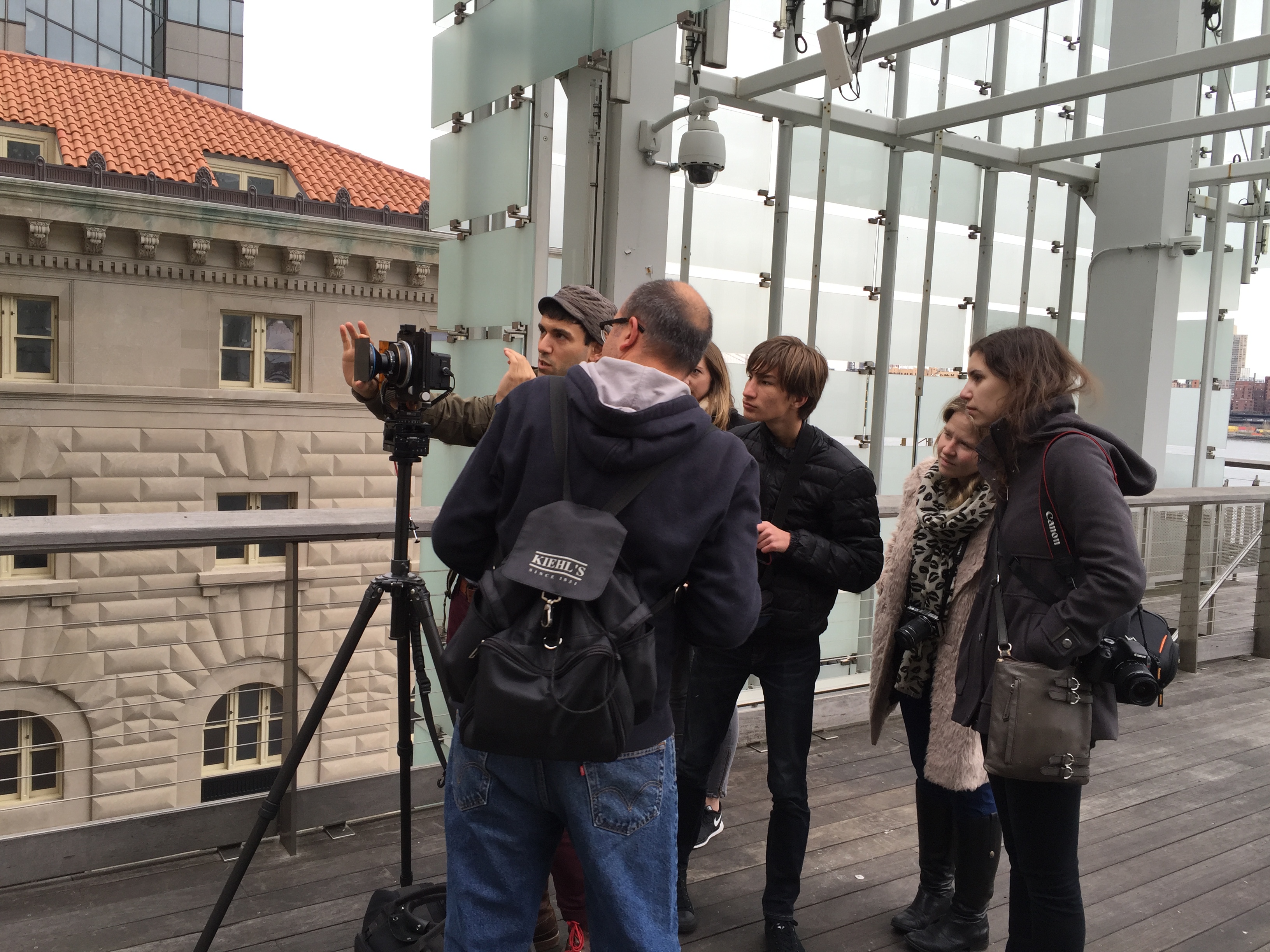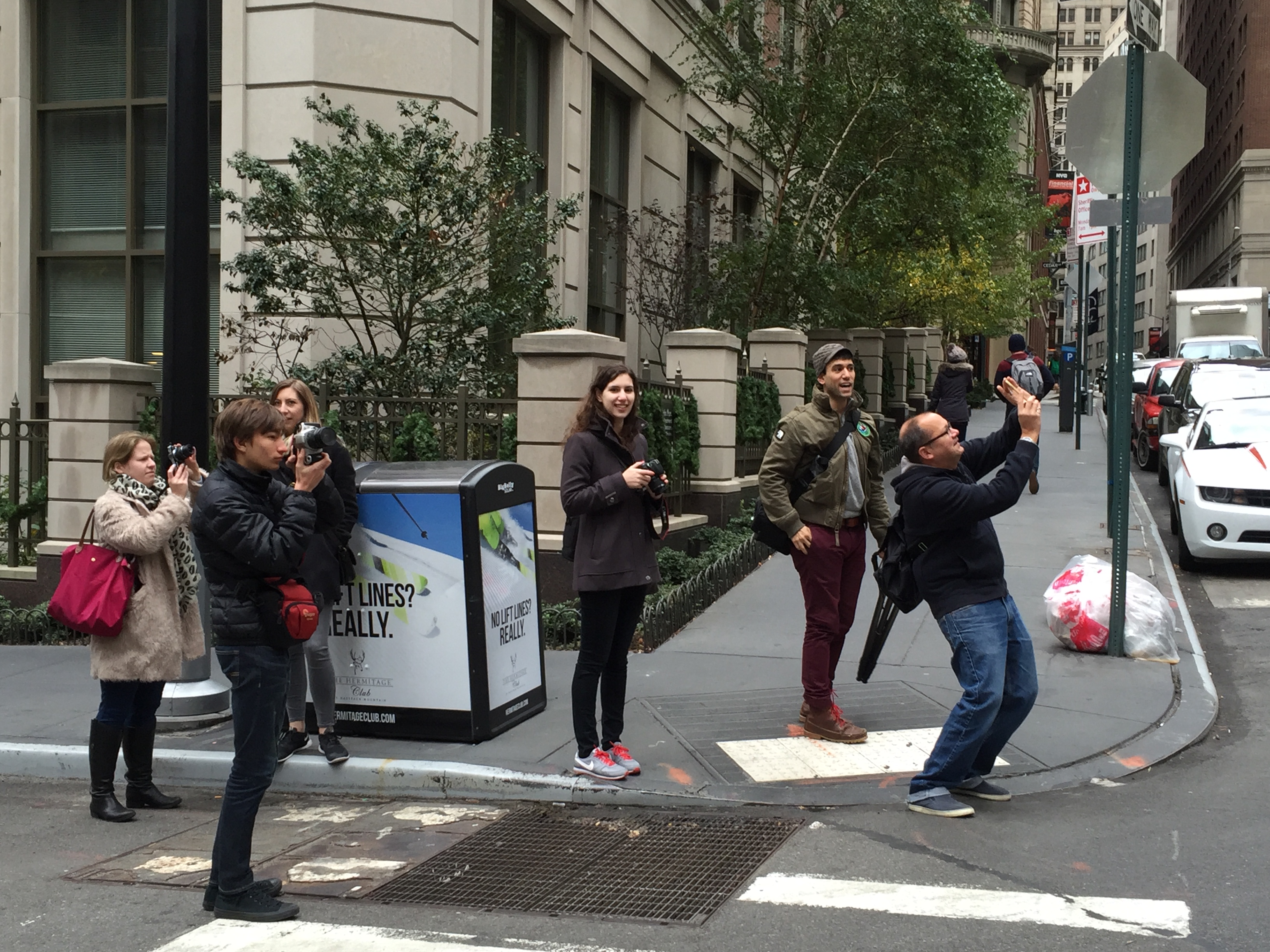by Catherine Teegarden Center for Architecture Foundation
Undeterred by the late November date, an intrepid group of amateur photographers convened at the Center for Architecture’s Seaport location on a cold Sunday morning to learn how to take better pictures of buildings. Starting with the premise that a photograph should tell a story, architectural photographer Matthew Carbone led the group through some fundamentals of composition and lighting, using examples from his own body of work as well as on-site demonstrations during the class.
Carbone helped focus the discussion by distilling this broad topic into a few different types of shots that were well-illustrated and easy to understand: the “context” shot, showing the building connected to its surroundings; the “hero” shot, the dramatic view architects always want of their own buildings; the “section” shot, which focuses on a particularly interesting portion of the building; and the “detail” shot, typically a close-up of materials and textures. Participants also learned about several useful apps for mobile phones and software programs for both PCs and MACs. Some, such as PhotoPills, SunSeeker, LightTrac, and photoephemeris.com, help one plan when to take photographs at a particular site by providing map-based information about sunrise, sunset, and the angle of sunlight at a given site on a particular time of day. Others, such as SKRWT and VSCO, are for editing photos after the fact to correct perspective issues and adjust other aspects of the composition.
Much of the class was spent out on the streets of the Financial District, which provided a wealth of interesting subject matter, combining some of the city’s oldest and newest buildings. The program provided a concise and engaging introduction to on-site architectural photography that both architects and non-architects would find relevant. We plan to offer the class again when the weather warms up – stay tuned!

